What is PPID in horses?
PPID stands for Pituitary Pars Intermedia Dysfunction. This is a condition in horses that disrupts the production of hormones. The production of hormones is regulated in the pituitary gland, a small gland that hangs below the brain. This gland consists of several parts and in PPID one of these parts is defective, the so-called pars intermedia. PPID is very similar to Cushing's disease and is therefore also referred to as such. However, the disease in horses is slightly different from Cushing's disease, which occurs in humans and dogs, which is why it is commonly referred to as PPID. More than 15% of horses and ponies older than 15 years have PPID. Research shows that only about 1.6% of owners know their horse has PPID.
How does PPID develop in horses?
As previously mentioned, there is a gland below the brain called the pituitary gland. Above the pituitary gland, right in the brain, is the hypothalamus. Together, these two parts are responsible for regulating the production and release of hormones. The pituitary consists of three parts, one of which is the pars intermedia. Normally, the hypothalamus is controlled by nerves that cause the hypothalamus to produce dopamine. This dopamine then travels to the pituitary gland, where it inhibits the production of ACTH. In older horses, the nerves that control the hypothalamus work less well, so less dopamine gets to the pituitary gland and there is less inhibition of ACTH production. Because the pituitary gland is less inhibited, it grows faster. An adenoma (benign tumor) develops. After that, the pituitary gland continues to produce ACTH continuously.
ACTH enters the blood via the pituitary gland. It is delivered to the adrenal glands. Here ACTH causes an increase in the production of cortisol (another hormone). So when ACTH is constantly present, cortisol is constantly being produced. Normally, a high level of cortisol provides a feedback signal in the hypothalamus, inhibiting the entire mechanism again. In PPID, the pituitary gland is so large that it no longer listens to the hypothalamus.
What are the symptoms of PPID in horses?
The symptoms are caused in part by the disruption in hormone regulation and in part by the pressure that the enlarged pituitary gland puts on the brain. The phenomena that can particularly stand out are: excessive hair growth and laminitis. Horses with PPID develop a long and curly coat, sometimes a different color. About 25% of horses with PPID develop laminitis.
Typically, a horse with PPID can be identified by its unusual coat (long and curly) coupled with a very good appetite and a round belly. Because of the abnormal coat, horses with PPID are shaved frequently. A decrease in muscle mass is also very characteristic.
Other things that might be noticed are: lumps of fat in the socket above the eye, reduced resistance (and therefore frequent inflammation and infection), wounds that are difficult to heal, excessive sweating, mares are less likely to conceive and drink and urinate a lot (since PPID is also a causing insulin resistance). Blindness and fainting spells are very rare.
In the early stages, less specific things may be noticed, such as reduced work ethic, loss of achievement, and subtle changes in character (e.g., being calmer and sleepier).
How is PPID diagnosed?
A veterinarian will make a diagnosis based on a combination of symptoms and a blood test. The regulation of hormones is very seasonal and some hormones are released at different times of the day. This can vary per horse. Therefore, in some cases it is necessary to carry out the tests in a clinic. Blood must then be drawn at certain times. In addition, special materials for processing the blood must sometimes be available.
A test is not always meaningful, for example if the disease has not existed long enough. The result can then not be unambiguous. The test must then be repeated after 3-6 months. Sometimes the vet can order additional tests. Your vet will also always check for diabetes and insulin resistance (two major complications of PPID).
How is PPID treated in horses?
Unfortunately, PPID cannot yet be cured: the treatment given merely suppresses the symptoms. The treatment uses strong drugs that inhibit the pituitary gland. These drugs must be administered for life and unfortunately cannot eliminate the cause of the disease. You can expect to see an improvement around 4-6 weeks after starting treatment. It is always advisable to have blood drawn regularly to find out if your horse is already receiving the correct dose. Sometimes you can see a lot of changes in your horse, but it's not quite within the reference values. Sometimes more medicine needs to be given. It is also possible that too much of the medicine is being given. Of course, it is very difficult to find the optimal dosage in the beginning and your vet will have to draw blood regularly. In many cases, the symptoms reappear over time, after all the cause has not been eliminated. It is important to have your horse take a blood test at the vet about once or twice a year to check that your horse is still receiving the correct dose.
This text was translated by a translation machine
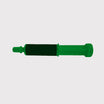 Horse Pharmacy
Horse Pharmacy Rugs
Rugs Care
Care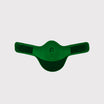 Saddle and Attachments
Saddle and Attachments Leg Protection
Leg Protection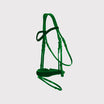 Bridles
Bridles Feed
Feed Fly Masks
Fly Masks Saddle Pads
Saddle Pads Headcollars and Ropes
Headcollars and Ropes Bits
Bits Other Disciplines
Other Disciplines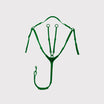 Reins and Auxiliary Reins
Reins and Auxiliary Reins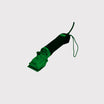 Clipping
Clipping Western
Western Eventing
Eventing Foals
Foals Reflection
Reflection Therapy Products
Therapy Products Boots and Shoes
Boots and Shoes Breeches and Belts
Breeches and Belts Tops
Tops Safety
Safety Competition
Competition Heated Clothing
Heated Clothing Gloves
Gloves Socks
Socks Spurs and Attachments
Spurs and Attachments Technology
Technology Whips
Whips Gifts
Gifts Casual Wear
Casual Wear Underwear
Underwear Rider Pharmacy
Rider Pharmacy Bags
Bags Books
Books Laundry supplies
Laundry supplies Jewelry
Jewelry Feed and Waterbowls
Feed and Waterbowls Equipment
Equipment Tack Room
Tack Room Pest Control
Pest Control Arena
Arena Horse Toys
Horse Toys Wheelbarrows
Wheelbarrows Yard
Yard Surveillance
Surveillance Disinfect
Disinfect Washing Area
Washing Area Lighting
Lighting Horse Pasture
Horse Pasture Current Conductors
Current Conductors Pole
Pole Insulators
Insulators Energisers
Energisers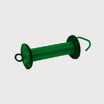 Gate Handles
Gate Handles Batteries and Accumulator
Batteries and Accumulator Nets
Nets Grounding
Grounding Tools
Tools Fencing Security
Fencing Security Wolf Defense
Wolf Defense Fencing Sets
Fencing Sets Fence locks
Fence locks Dogs
Dogs Cats
Cats Rodents
Rodents Dogs Pharmacy
Dogs Pharmacy Cats Pharmacy
Cats Pharmacy Rodents Pharmacy
Rodents Pharmacy Cattle Pharmacy
Cattle Pharmacy Poultry Pharmacy
Poultry Pharmacy Veterinary Supplies
Veterinary Supplies Cattle
Cattle Sheep and Goats
Sheep and Goats Poultry
Poultry Heat Lamps
Heat Lamps Calves
Calves Marking
Marking Halters
Halters